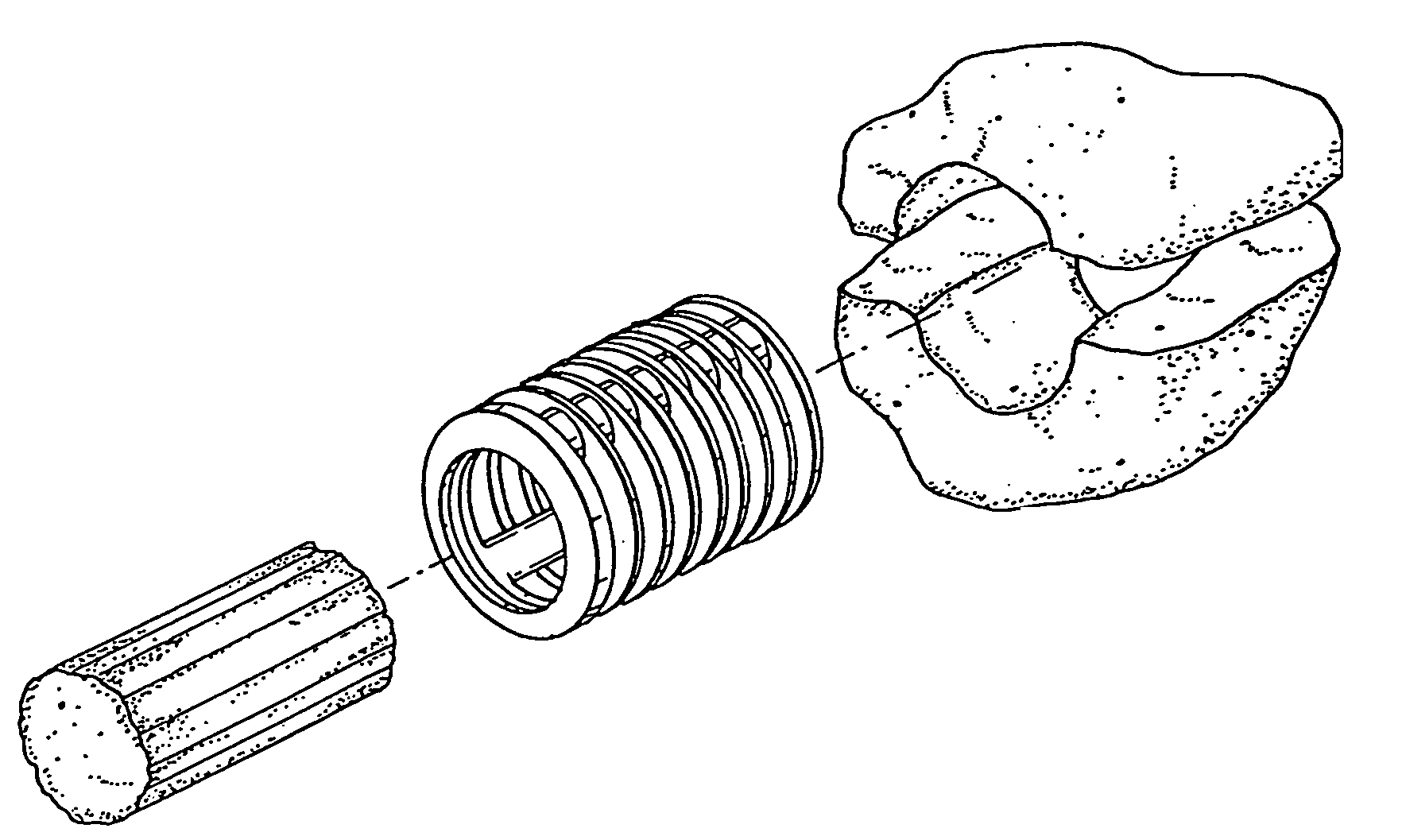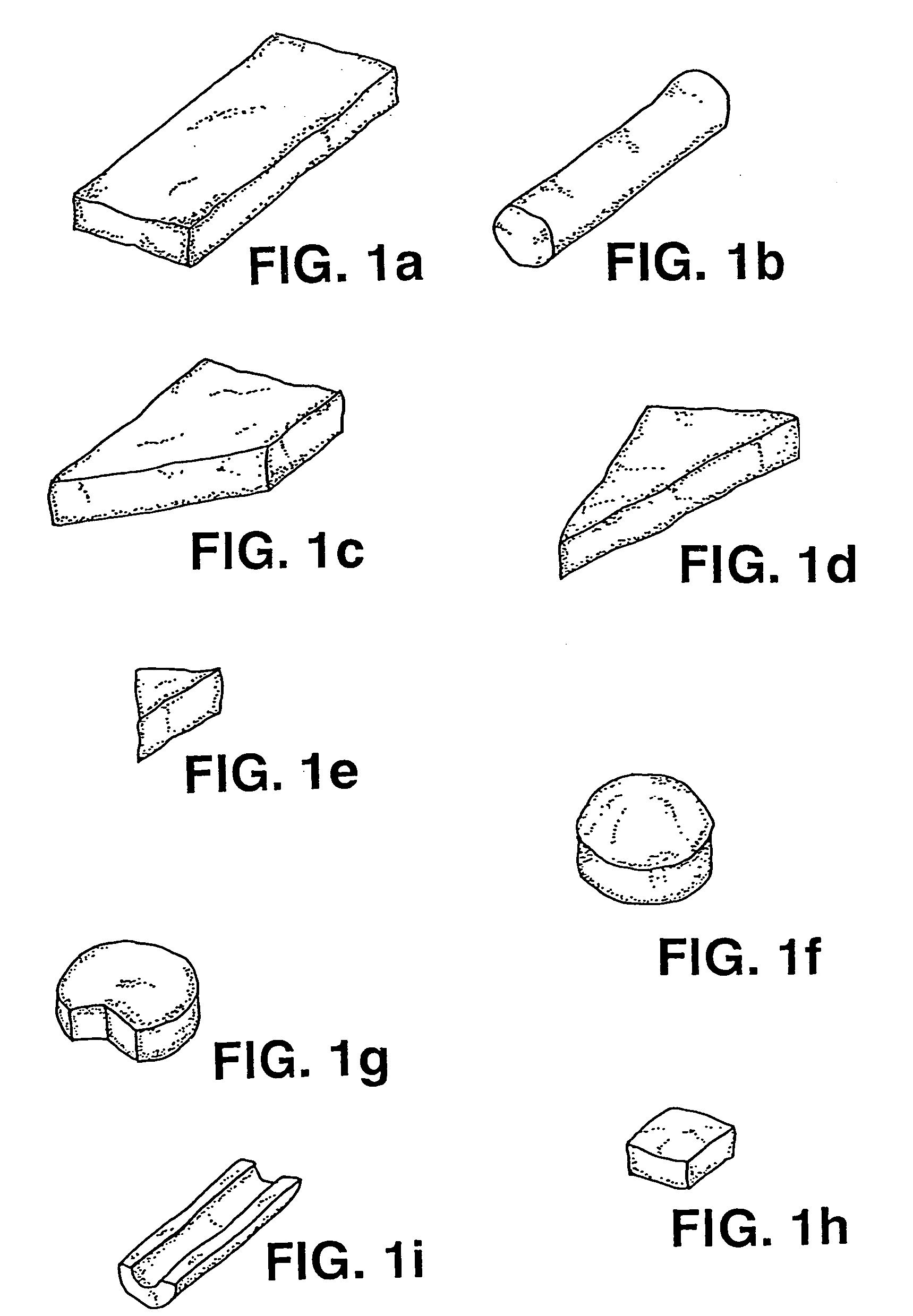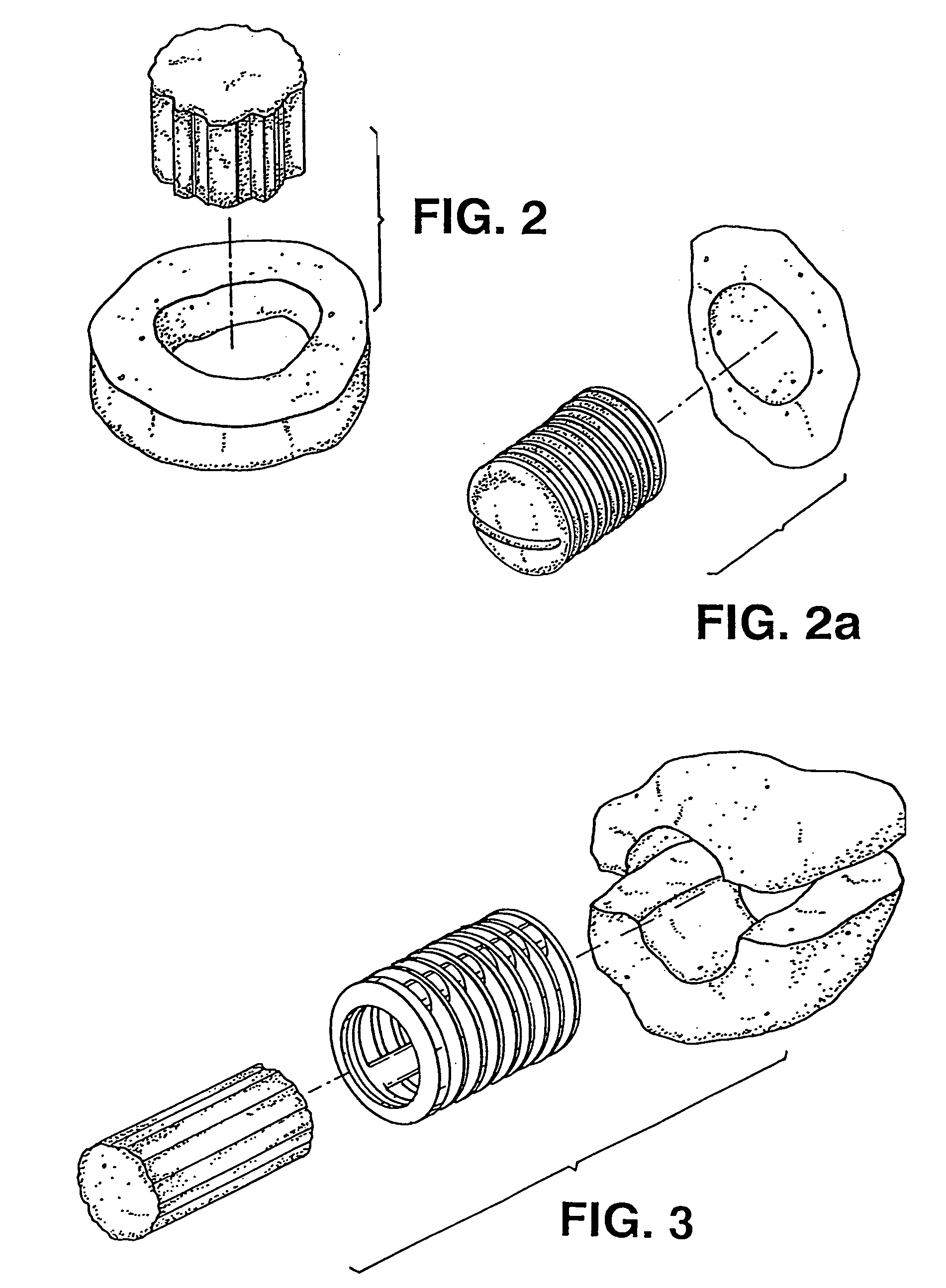Osteoimplant and method of making same
- Summary
- Abstract
- Description
- Claims
- Application Information
AI Technical Summary
Benefits of technology
Problems solved by technology
Method used
Image
Examples
example 1
Process of Making a Species-Specific Osteoimplant with Defined Dimensions.
[0104] Species-specific (Rhesus Monkey) long bones were aseptically cleaned. The cortical bone was processed in the bone milling apparatus described in U.S. Pat. No. 5,607,269 to yield 65 grams of elongate bone particles. The elongate bone particles were placed in a reactor and allowed to soak for 5-10 minutes in 0.6N HCl plus 20-2000 ppm nonionic surfactant solution. Following drainage of the HCl / surfactant, 0.6N HCl at 15 ml per gram of total bone was introduced into the reactor along with the elongate bone particles. The reaction proceeded for 40-50 minutes. Following drainage through a sieve, the resulting demineralized elongate bone particles were rinsed three times with sterile, deionized water at 15 ml per gram of total bone, being replaced at 15 minute intervals. Following drainage of the water, the bone particles were covered in alcohol and allowed to soak for at least 30 minutes. The alcohol was th...
example 2
Evidence of Osteoinduction by Grafton DBM in Non-Human Primate Spine Fusion.
[0107] While autogenous iliac crest bone graft remains the “gold standard”, much work continues to identify viable bone graft extenders, enhancers, and substitutes. While several demineralized bone matrix formulations have been shown to be variably osteoinductive in rodent ectopic bone assays, few have demonstrated efficacy in higher species and more challenging applications such as posterolateral spine fusion. To date, none have been tested in a non-human primate posterolateral spine fusion model which has been previously determined to be extremely challenging with less than 40% of animals achieving successful fusion with autogenous iliac crest bone graft. The purpose of this example was to test the osteoimplant described in Example 1 for evidence of osteoinduction and its use as an extender / enhancer for autogenous bone graft in a non-human primate.
[0108] Four skeletally mature rhesus macaques underwent ...
example 3
Implantation of Osteoimplant in a Human Patient to Promote Spinal Fusion.
[0109] Human-specific osteoimplant was made in the same manner described in Example 1. However, the mold dimensions and final dimensions of the osteoimplant were altered to adjust to the approximate size required for human posterolateral spinal fusion procedure (known by those skilled in the art). The dimensions of the osteoimplant pieces were approximately 5.0 cm in length, 2.5 cm in width and approximately 1 cm in height with trough dimensions 4 cm in length, 1.5 cm in width and depth approximately 0.7 cm. The trough design specifically allowed for the surgeon to fill the center of the osteoimplant with autograft or allograft or both. Autograft is usually obtained from local bone at the site of the procedure, or marrow, or iliac crest or a combination. The fluids rapidly dispersed within the osteoimplant hydrating the osteoimplant. The osteoimplant is placed either trough down facing the decorticated transv...
PUM
| Property | Measurement | Unit |
|---|---|---|
| Percent by mass | aaaaa | aaaaa |
| Pressure | aaaaa | aaaaa |
| Percent by mass | aaaaa | aaaaa |
Abstract
Description
Claims
Application Information
 Login to View More
Login to View More - R&D
- Intellectual Property
- Life Sciences
- Materials
- Tech Scout
- Unparalleled Data Quality
- Higher Quality Content
- 60% Fewer Hallucinations
Browse by: Latest US Patents, China's latest patents, Technical Efficacy Thesaurus, Application Domain, Technology Topic, Popular Technical Reports.
© 2025 PatSnap. All rights reserved.Legal|Privacy policy|Modern Slavery Act Transparency Statement|Sitemap|About US| Contact US: help@patsnap.com



